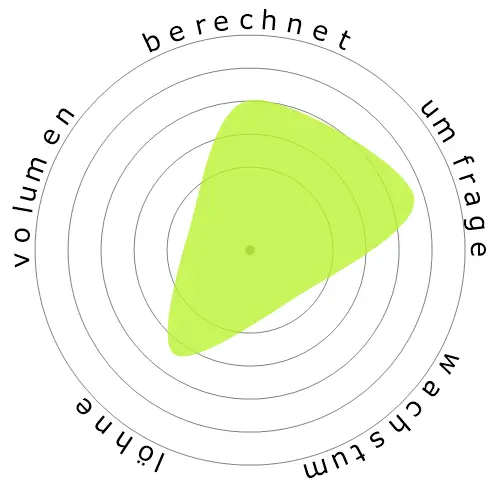Industrie- und Produktdesigner




Personen haben sich auch angesehen
Berechnetes Automatisierungsrisiko
Mäßiges Risiko (41-60%): Berufe mit einem mäßigen Automatisierungsrisiko beinhalten in der Regel Routineaufgaben, erfordern jedoch immer noch ein gewisses menschliches Urteilsvermögen und Interaktion.
Weitere Informationen darüber, was dieser Wert ist und wie er berechnet wird, sind verfügbar hier.
Benutzerumfrage
Unsere Besucher haben abgestimmt, dass es eine geringe Chance gibt, dass dieser Beruf automatisiert wird. Diese Einschätzung wird weiterhin durch das berechnete Automatisierungsrisiko unterstützt, welches eine 47% Chance der Automatisierung schätzt.
Was denken Sie, ist das Risiko der Automatisierung?
Wie hoch ist die Wahrscheinlichkeit, dass Industrie- und Produktdesigner in den nächsten 20 Jahren durch Roboter oder künstliche Intelligenz ersetzt wird?
Gefühl
Das folgende Diagramm wird überall dort eingefügt, wo eine beträchtliche Anzahl von Stimmen vorliegt, um aussagekräftige Daten darzustellen. Diese visuellen Darstellungen zeigen die Ergebnisse von Nutzerumfragen im Laufe der Zeit und geben einen wichtigen Hinweis auf Stimmungstrends.
Gefühlslage über die Zeit (jährlich)
Wachstum
Die Anzahl der 'Commercial and Industrial Designers' Stellenangebote wird voraussichtlich um 3,1% bis 2033 steigen.
Gesamtbeschäftigung und geschätzte Stellenangebote
Aktualisierte Prognosen sind fällig 09-2025.
Löhne
Im Jahr 2023 betrug das mittlere Jahresgehalt für 'Commercial and Industrial Designers' 76.250 $, oder 36 $ pro Stunde.
'Commercial and Industrial Designers' wurden 58,7% höher bezahlt als der nationale Medianlohn, der bei 48.060 $ lag.
Löhne über die Zeit
Volumen
Ab dem 2023 waren 30.810 Personen als 'Commercial and Industrial Designers' in den Vereinigten Staaten beschäftigt.
Dies entspricht etwa < 0,001% der erwerbstätigen Bevölkerung im ganzen Land.
Anders ausgedrückt, ist etwa 1 von 4 Tausend Personen als 'Commercial and Industrial Designers' beschäftigt.
Stellenbeschreibung
Entwerfen und entwickeln Sie hergestellte Produkte, wie Autos, Haushaltsgeräte und Kinderspielzeug. Kombinieren Sie künstlerisches Talent mit der Forschung über die Produktverwendung, das Marketing und die Materialien, um das funktionalste und ansprechendste Produktdesign zu schaffen.
SOC Code: 27-1021.00


Kommentare
Leave a comment
Of course, modern designers work in a multidisciplinary manner and communicate between the various fields of product development. They are not as isolated as the qualities listed above suggest, so I doubt they will become extinct too quickly.
Companies are unlikely to risk their money and reputation on AI wild shots without some form of sentient consideration. Despite this, I bet some will try it anyway, and I am honestly eager to see them succeed.
Advanced creative tasks like innovation management and the expansion of the product portfolio are too important for companies to leave exclusively to tools right now. This job will likely adapt and merge a lot more with engineering and management disciplines.
It is normal for jobs to change with technology.
However, the human-like quality of AI, like Chat GPT3 and others, is still primitive in capacity, even though their articulation is top-notch, to say the least. Even then, it is not enough to design products at the capacity that humans currently are capable of.
Certain design fields will probably struggle to reduce their dependency on humans, like graphic design, illustrations, and animation design. However, fields like product or industrial design, architecture, and the like are not likely to be replaced any time soon.
For now and in the foreseeable future, I see AI as a personal assistant to industrial designers rather than a threat.
Given a certain prompt and a starting image, an AI could create thousands of designs, each better than the last one.
New CAD tools will optimize and speed up the development process. Consequently, companies will hire fewer employees and expect more from them. This could lead to worker burnout and exploitation becoming even more common, due to the limited staff.
Prospective employees, in addition to having exceptional artistic skills, will also be expected to have proficiency in programming.
In English or Spanish I think it is not understood that it is a profession that has many factors that it is difficult to generate algorithms, art in my opinion is the last line of algorithms, industrial design contemplates Sciences and arts. As logical as that anyone can have a proposal to many requirements in the industry.
In my humble opinion, it falls under creative technology. It doesn't matter what you are actually designing; you're always going to, in the end, design a new way of living.
Hinterlassen Sie eine Antwort zu diesem Beruf